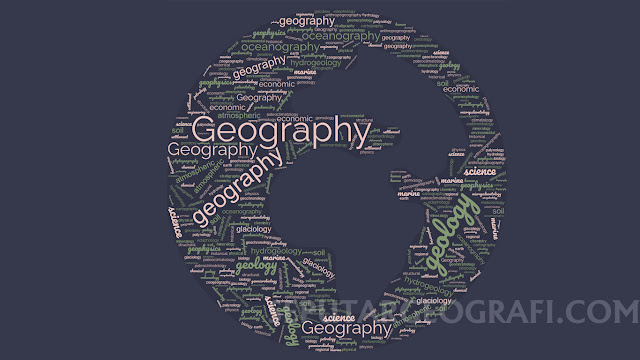According to Bintarto, Geography is a science that studies the earth and everything on it, such as people, flora, fauna, climate, air, and all their interactions. According to the Seminar and Workshop of the Indonesian Geographers Association (SEMILOKA IGI) in 1989, Geography is a science that studies the similarities and differences of geosphere phenomena from an environmental and regional point of view in a spatial context.
The following are some of the sciences related to geography.
1. Lithosphere (Earth’s Crust)
- Geology: Studies the Earth's crust layers and their historical formation.
- Geophysics: Studies the Earth's physical properties, including gravitational and magnetic fields.
- Geodesy: Focuses on measuring and mapping the Earth's surface.
- Petrology: Examines rocks and the conditions under which they form (igneous, metamorphic, and sedimentary rocks).
- Mineralogy: Explores minerals, their chemical properties, and crystal structures.
- Volcanology: Investigates volcanoes, magma, lava, and related geological phenomena.
- Sedimentology: Analyzes the formation of soil and rock layers through sediment deposition.
- Stratigraphy: Studies soil and rock layers to interpret Earth's history.
- Geomorphology: Examines the Earth's surface forms and the processes that shape them.
2. Atmosphere (Air Layer)
- Meteorology: Studies the Earth's atmosphere for weather forecasting.
- Climatology: Examines climate and long-term weather patterns.
- Paleoclimatology: Investigates historical climate changes over Earth's history.
- Atmospheric Science: Studies the chemical and physical characteristics of the Earth's atmosphere.
- Aeronomy: Focuses on the upper atmosphere, including the ionosphere and exosphere
3. Hydrosphere (Water Bodies)
- Hydrology: Investigates the distribution and movement of water on Earth, including the hydrological cycle.
- Hydrogeology: Studies groundwater movement and distribution in Earth's crust.
- Oceanography: Explores the oceans, including their physical, chemical, and biological aspects:
- Physical Oceanography: Examines the physical properties of oceans, such as waves and currents.
- Chemical Oceanography: Studies ocean chemistry and its interaction with the atmosphere.
- Biological Oceanography: Analyzes marine organisms and their ecological interactions.
- Marine Geology: Investigates the geology of the ocean floor, including plate tectonic
4. Biosphere (Life on Earth)
- Biogeography: Studies the spatial and temporal distribution of flora and fauna.
- Phytogeography: Examines the distribution of plants.
- Zoogeography: Analyzes the distribution of animals.
- Paleontology: Explores fossils and the history of ancient life.
5. Anthroposphere (Humans and Their Activities)
- Human Geography: Studies human activities and their spatial patterns, including:
- Economic Geography: Focuses on the spatial distribution of economic activities like trade and industry.
- Political Geography: Examines spatial aspects of governance and international relations.
- Social Geography: Studies the spatial distribution of social phenomena.
- Settlement Geography: Investigates human settlement patterns and their development factors.
- Anthropogeography: Studies the distribution and interaction of humans with their environment.
6. Pedosphere (Soil Layer)
- Soil Science: Focuses on soil as a natural resource, including its physical, chemical, and biological properties.
- Pedology: Studies soil formation, classification, and distribution.
- Edaphology: Examines soil fertility and its role in supporting plant life.
References
- Putra, Tara Anggada. 50 Cabang Ilmu Geografi.
- Indonesian Geographers Association (IGI), SEMILOKA, 1989.
- Various academic texts and resources on geosciences and geography.




